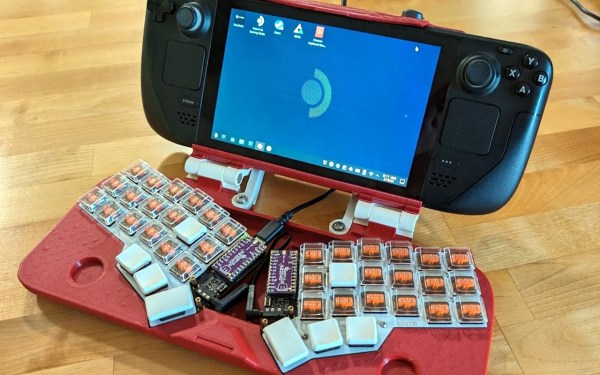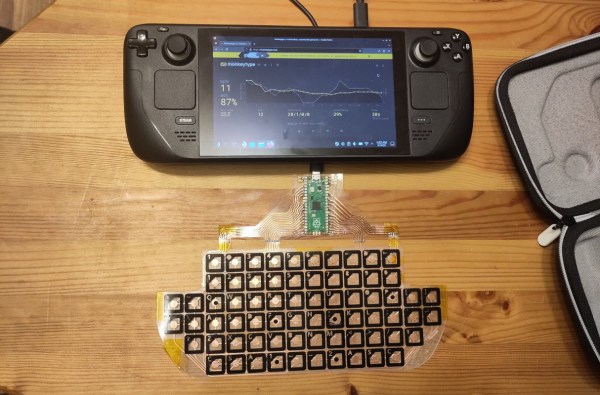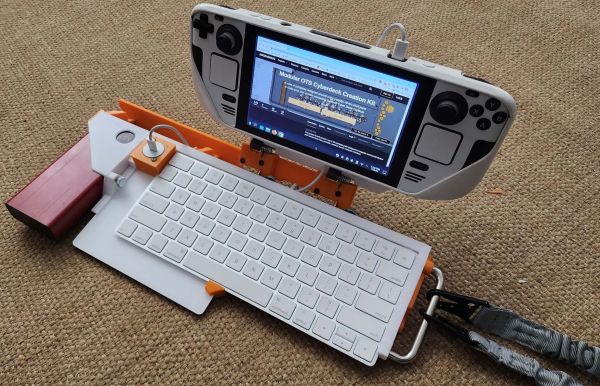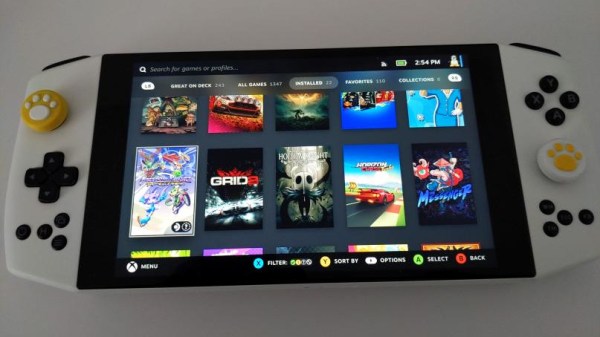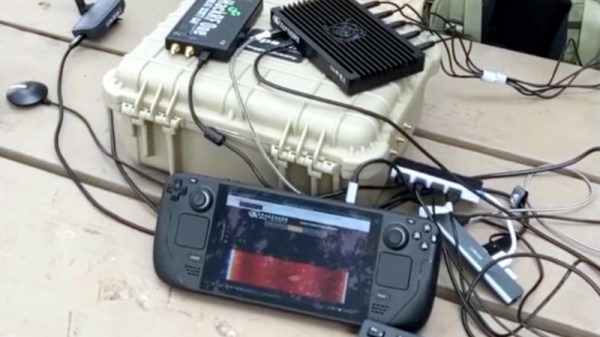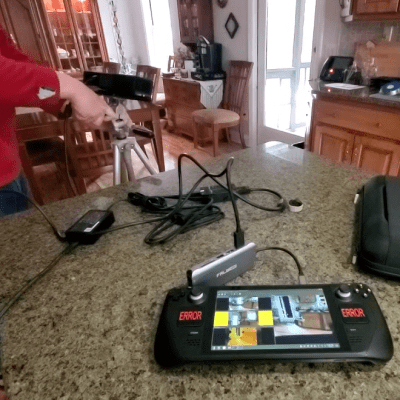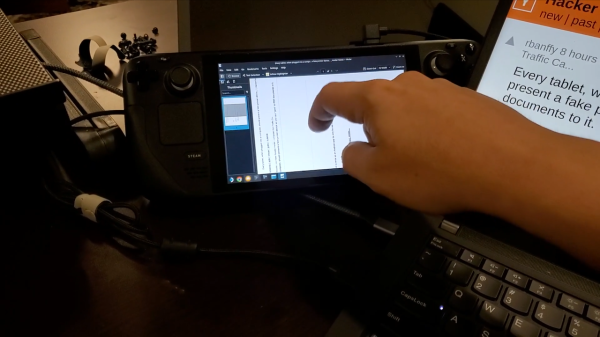Whether or not you’re into playing video games, you have to admit, that the Steam Deck is a pretty interesting piece of hardware. We’ve seen hackers jump through all sorts of uncomfortable hoops to get Linux running on their mobile devices in the past. The fact that you can pick up a fairly powerful x86 handheld computer right now for a reasonable amount of money is certainly exciting. The Linux steam deck gets even more enticing when you consider the software support it enjoys thanks to its large and vibrant user community. No wonder we’ve started to see them dotting the workbenches during Hackaday Supercon.
If there’s a downside, it’s that the Steam Deck was very clearly designed to be a handheld gaming system, not a portable computer. Sure you can plug in an external monitor and keyboard, but things can quickly become ungainly. This is why a printable dock from [a8ksh4] caught our eye.
It’s officially designed to let you mate the Steam Deck with the Corne keyboard, a split ergonomic design that’s graced these pages a few times in the past. [A8ksh4] has included links for all the hardware you’ll need outside the printed parts, from the hinges and keyboard PCBs, all the way to the keycaps and stainless steel screws. If you’re looking for a turnkey experience, this is it.
Continue reading “Printable Keyboard Dock Puts Steam Deck To Work”

